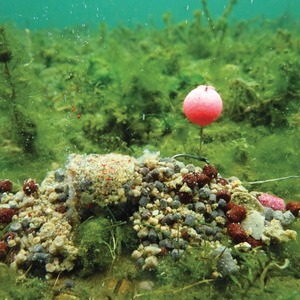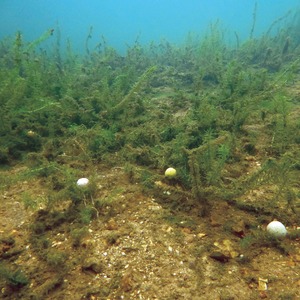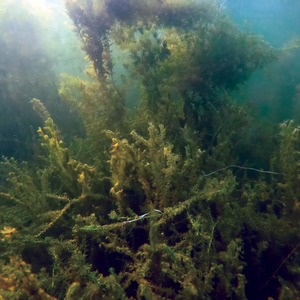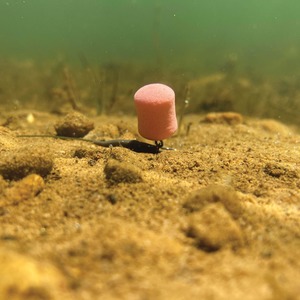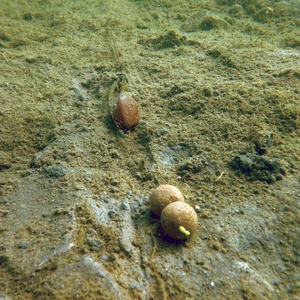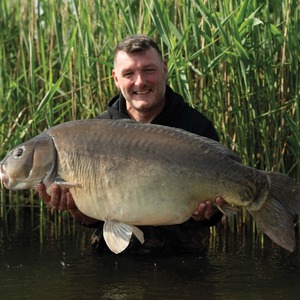
BELOW THE SURFACE: 20TH ANNIVERSARY SPECIAL
What Rob Hughes has learned during his 20 years spent diving on carp venues...
Rob Hughes talks about what he’s learned during his 20 years spent diving on carp venues. He’s busted myths and has seen how things haven’t always been as we’ve perceived. He’s also adamant that one thing above all other will improve our chances of catching…
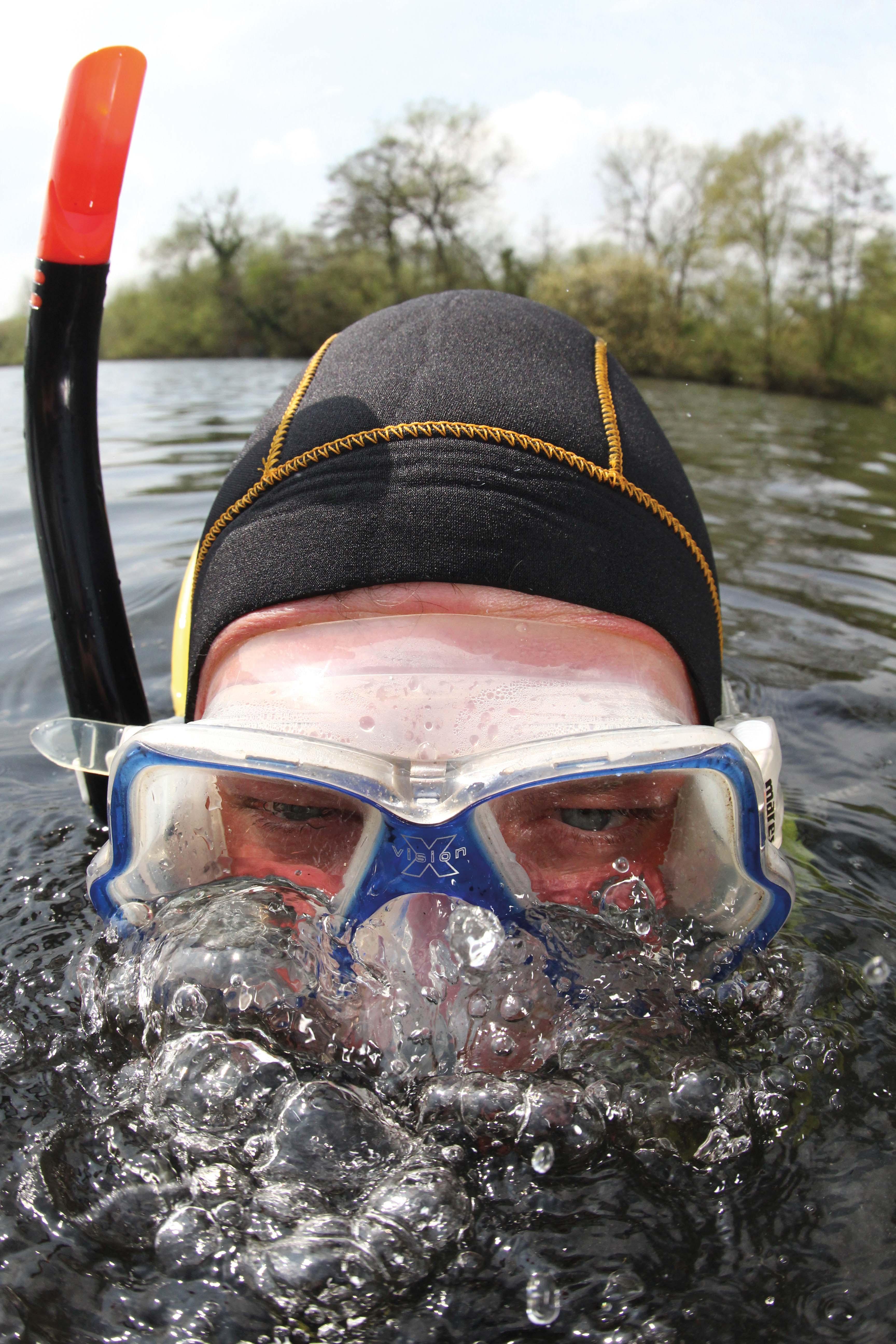
We’re 20 years down the line now with Below the Surface. Have any of your original fundamental findings changed?
“On the whole, they’re very much still the same. Carp can be conditioned to become afraid or attracted to ‘things’, and also the fundamentals of what we need to do to catch them are more or less the same as they have always been: good bait, and a decent rig well presented in the right spot. It’s not rocket science, despite what many would have us believe.
“Anglers always used to talk about location being ‘the one’, but as time goes by and our waters see more pressure, in my mind, presentation often trumps location, especially on busy waters where there’s not much chance to move. You have to wait for the fish to move on you, which they often do naturally anyway as the water warms and cools. Anglers often get on fish, then sadly get it wrong, as we’ve seen many, many times. Whether it’s the spot we’re fishing, the rig or the bait we choose, if it’s not right, it simply won’t work consistently well.
“Attention to detail, accuracy, and also the application of a sensible thought process from the findings you discover to the results you see, are fundamental to good angling practice. There are occasions when a chuck-and-chance approach will work, but the harsh reality is that, to be consistently successful, you have to get your presentation bang on, all of the time.
“I think my role as manager of Carp Team England galvanised that thought process even more than before. It was my role to recce, find out as much as possible about the venue and come up with a game plan. Then we would all fashion it into shape and find the micro edges that would win us medals. On the world stage, there is no hiding place, so two golds, a bronze and a world number one ranking in six years meant we must have been getting something right.”
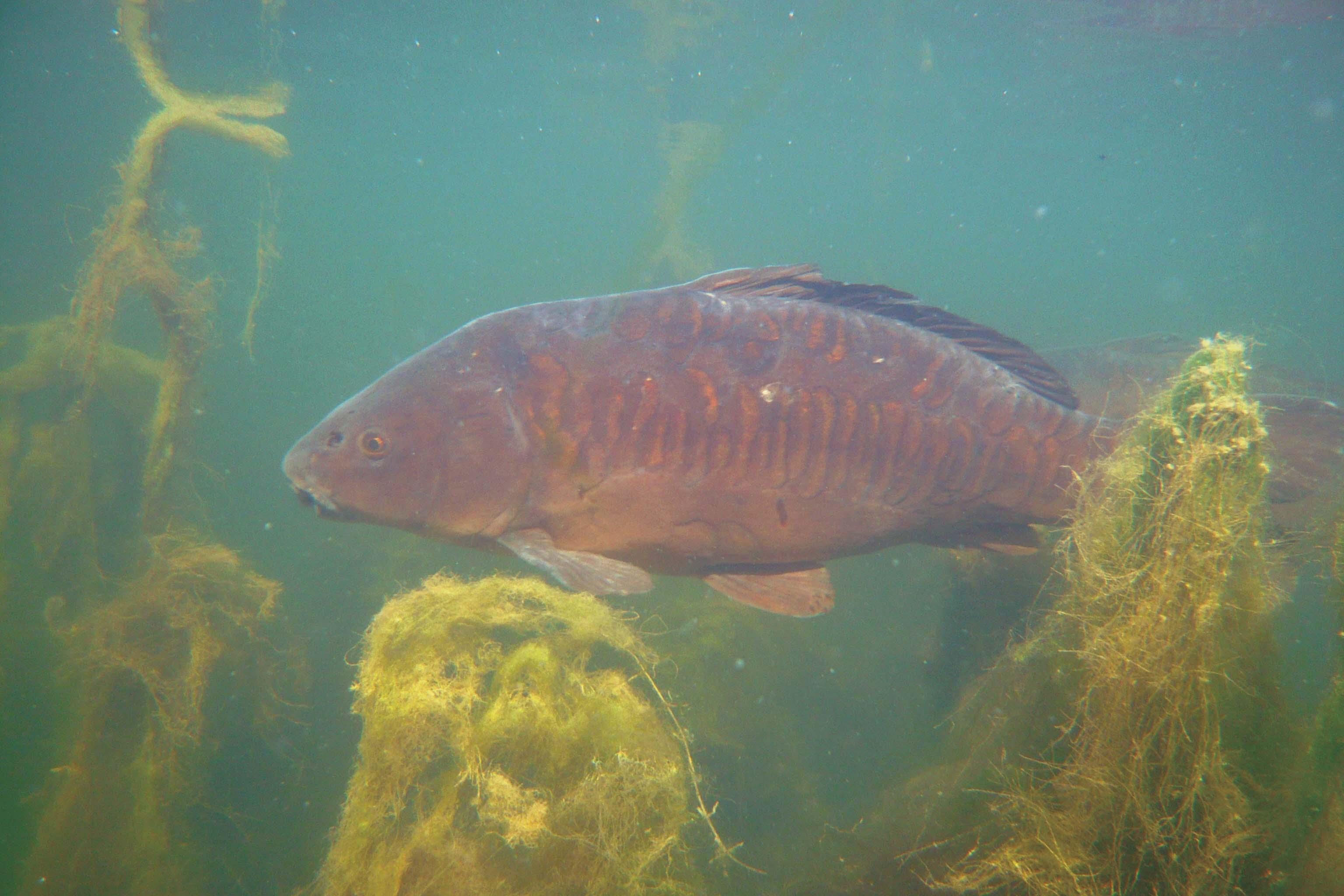
What was your biggest lesson or finding back then, and does it still play a key role in your angling 20 years down the road?
“Through diving, I’ve learned loads about the make-up of lakes, and also about the way carp behave, and I’m not just talking about a feeding spot that’s been primed in the edge for the cameras. I’ve been lucky enough to swim with them in their world, so I’m talking about carp in their environment being, well, just them. That’s invaluable, especially when targeting big carp.
“The biggest single tactical lesson, though, both back then and still now, is that it’s absolutely vital to know what you’re fishing over. That comes with an understanding of how to cast, how to feather the lead properly, feeling the lead down, and ultimately, reading the bottom. Getting the donk or not as the case may be, is the key starting point when you are fishing on the bottom.
“Understanding the make-up of the bottom gives you so much information. Firstly, it will tell you how the fish are likely to feed. It will tell you what rig to use, as once again, there are certain rigs that work better in certain situations. It dictates how your bait will behave when it’s on the bottom, not just the way that it sits, but also how the bait will react to the strata. For example, maggots over gravel will crawl into the cracks and disappear, and standard boilies fished on smelly silt will take on the smell of the silt. It’s no coincidence that corn and maggots work well over silt. Heavy boilies are better over harder bottoms, and if there is heavy silt around, pre-soaking your boilies in hemp water or plugging them in oil can make a massive difference to their attractiveness, as the silt smell can’t penetrate. Finally, understanding the structure of the lake will also let you know if there is any weed around, and that’s one of the biggest things that kills a good presentation.
“I’ve been extremely lucky as I’m able to cross-reference what I believe is happening with what is actually happening. Many years of experience has given me the ability to picture very accurately what is down there as soon as I feel how my lead hits the deck, and that’s priceless.”
“Unless a herd moves in and creates a big old competitive feed, the more bait there is, the less chance you’ve got of one of them picking up your hookbait.”
Have you gone full circle with any of your findings or beliefs? If so, what are they, and can you relive the event that changed your mind?
“I suppose bait application may well be one area I’ve rethought. On the whole, I’ve never really been a heavy baiter, partly as a result of my formative carp fishing years when I could never afford a load of bait. I’m very lucky now, but most of the time I still prefer to get my rig in the right spot and present it correctly. Obviously, over the years I’ve both seen and have had some hefty hits of carp over big beds of bait. As a result, I went through a spell where I started using an awful lot more. Having seen some of the enlightening films that show carp feeding on spots, however, it makes me re-believe that a smaller amount of bait well presented is often a better bet for short sessions. It’s reinforcing what I do and already know. A lot of the time carp will come in, pick up a morsel or two and then swim off. They don’t always get their heads down and trough as we all think. It’s more pinking up bits over a longer period of time. Unless a herd moves in and creates a big old competitive feed, the more bait there is, the less chance you’ve got of one of them picking up your hookbait, unless it really stands out. That’s why, once again, pink is such a brilliant standout bait. It’s so much more noticeable than most of the other colours, and so often, a carp coming in over a baited spot will pick up the pink one first.”
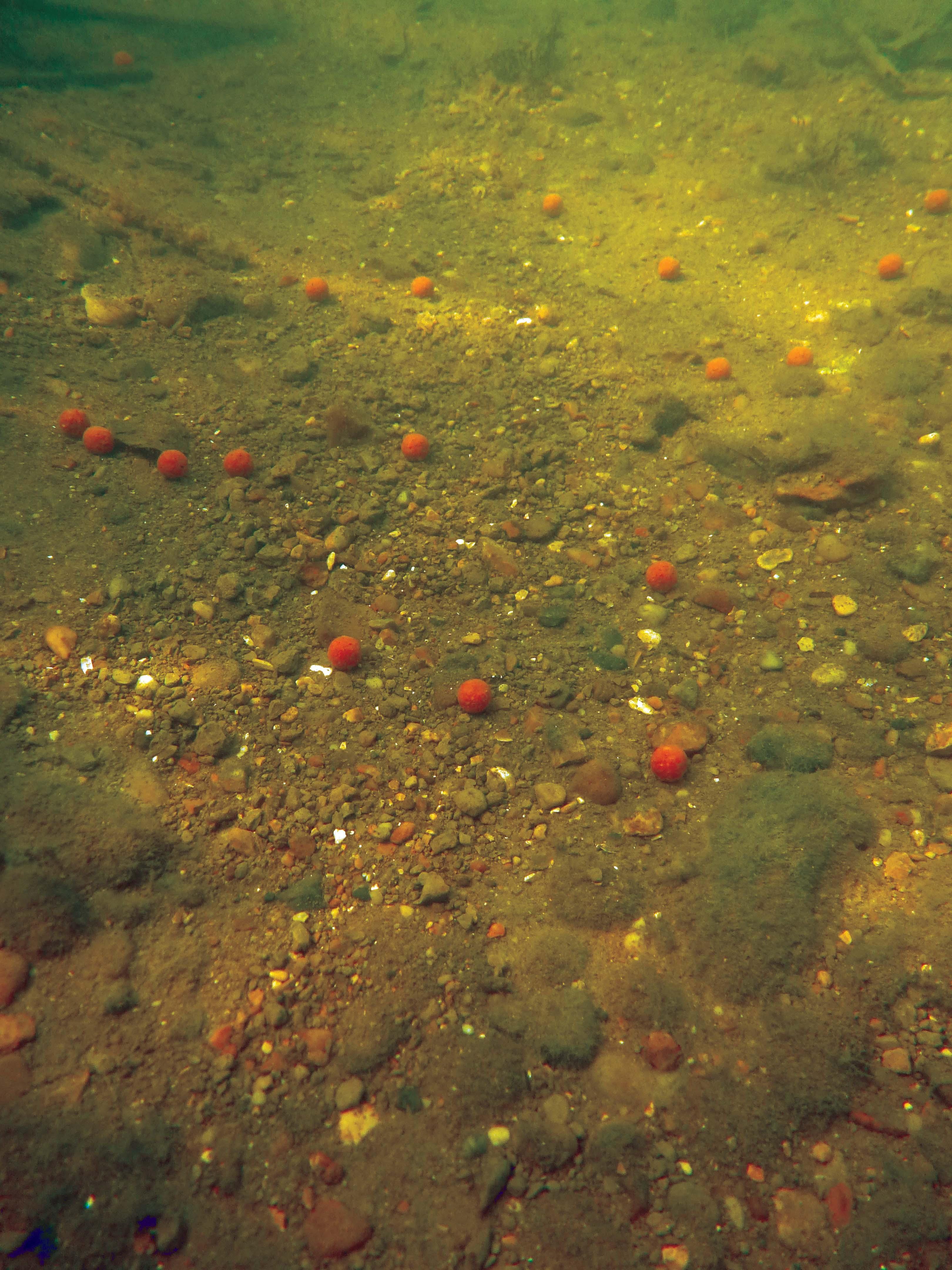
In your eyes, what areas of carp fishing have changed the most in the last few years?
“The move over to natural baits is arguably the most effective one for increased catch rates. Although some big hits are claimed on boilies, a huge number come over naturals, with half a dozen boilies thrown in to legitimise the boilie claim. Worms, in particular, have revolutionised baited spots, and although maggots have been around as a winter bait for a very long time, worms have outfished them by a hell of a way.
“Interestingly, it was the lads in the England camp who were the ones to master the way to fish them first, and that lead to four years of Team England members being on the podium of the British Carp Angling Championships. Sadly, naturals are not allowed in the world championships, or I think we would have had some more medals. On the domestic competition scene, though, worms dominated when they were allowed. It was Wayne Mansford and Ryan Need who took things to the next level, and being close to them I naturally had the inside info on what they were doing. The cat’s out of the bag now, so they won’t mind me talking about it, but it was quite laughable that some conspiracy theorists thought there were other things involved. They all look a bit daft now people know the reality was that it was well-applied worms, casters and bloodworm all the time.
“The cat’s out of the bag now, so they won’t mind me talking about it, but it was quite laughable that some conspiracy theorists thought there were other things involved.”
“When you see how effective natural bait can be, and how the fish just can’t resist a bed, it’s a real eye-opener. Once the fish start feeding, they just don’t stop, or even move away. Depending how deep your pockets are, you can end up with a significant portion of the lake’s population on your spot, and they just don’t move. Even when the bait has gone the fish stay in the area and wait for more. Although not underwater-based, the natural revolution was definitely an eye-opener.
“The other more subsurface-based one, and it comes back to what I was saying above, is the use of tech in carp fishing. Technology always marches forward, but now the echo sounders on bait boats are next level, and castable fish finders are a serious weapon. Anglers are bathymetrically mapping lakes digitally, and that leads to more captures. Ultimately, the reason for both of these items is exactly what I was saying above. The singular most important thing you can do to improve your catch rates is to fully understand what you are fishing over, and that’s what these maps and gadgets give you without you getting wet.”
Have you ever had a period of time where you’ve just confused yourself and your angling as you’ve gained too much knowledge from diving?
“Weed always blows my mind, and on the big, clear gravel pits I love fishing, it’s only getting worse. Sadly for me, I know just how easy weed can totally cock up your presentation, and it doesn’t take a lot. In fact, light weed is often more of a stealthy assassin than heavy weed, as you don’t know it’s there. The spot, the rig and the bait are three very simple things that can be taken for granted, but they can be totally destroyed by the smallest amount of weed.
“Unfortunately, because I know what weed can be like on the deck, and how often we underestimate it, I know how it can trip us up. I’ve fallen foul of it myself, and have been in swims where I’ve had to cast around so much to try and find a spot I was happy with, I’ve scared off any chance of a bite for the next few hours. It would have been better to simply pub-chuck a Choddy or fish a pop-up off the lead and hope for the best. If I’m fishing on the bottom, I can’t rest unless I know that my rigs are presented as well as they possibly can be. An awful lot of the blanks that anglers suffer are as a result of bad presentation, not bad rigs, bad bait or bad swim choice. Bad presentation, and weed, are often the cause.”
We’ve looked at so-called angling myths, which you busted many years ago, but have any new ones that have come along more recently?
“It’s not really a myth bust, more the realisation of simple fact. There isn’t an all-round wonder rig to suit all situations perfectly. ‘Get on the Chod or the Ronnie,’ may be applicable some of the time, but certainly not all. If you speak to ten different highly successful anglers, they will all come up with a wonder rig they swear by. They’ll often rubbish other rigs in the process. Admittedly they’re all successful, but nine of them must be wrong if one of them is right and does, in fact, use the ‘best rig in the world’.
“There simply isn’t an all-time best rig. For a start, all of these top-tenners will have their own favourite fishing style—boilie, particle, bag, etc., and all require a different approach. They fish at different venues, so everything they do is site-specific to that individual fishing situation, or the carp that they are fishing for, and that’s true of all fishing situations.
“Certain rigs or styles, or baiting patterns that you see or hear about, may work in certain situations, or even not at all. It’s up to us as individual anglers to read the water and the carp in front of us, then put the best plan together, but remember what I said about presentation being the key. PVA bags are so successful because they don’t tangle, and they give good presentation. Chods were so successful as they didn’t tangle and gave good presentation. Ronnies and Combi Rigs are successful as they give excellent presentation and keep the bait and hook point out of the weed. There’s a pattern to be seen here, and taken advantage of. If you’re struggling, don’t overcomplicate things. If you can find a hard spot, put a bag on it. If you can only find silt, fish a balanced low Ronnie and a mesh bag of pellets. Simple as that.”
From all your underwater observations and learnings, what are the top three areas or things you see anglers getting wrong time and time again?
1. Hit the Clip
“Anglers must religiously hit the clip when they cast out, not miles in the sky where it bounces back and lands in a pile. Nor must it hit the clip just after it’s hit the water. We all know the cast. It fell short but hit the clip with a huge bow or on the drop then we say, ‘It hit the clip,’ and we look at our mate for reassurance. If it didn’t, don’t fool yourself or waste your time. Hitting the clip properly just above the water allows the lead to tighten the line, and give a direct and better line-lay. It allows the rig to straighten out and not tangle, giving better presentation; and it gives the angler a load more confidence knowing they’ve done it right and are bang on the money.”
2. Hit the Clip
“Yes, it’s the same one again, but this time for a different reason. If you hit the clip, you can feel the lead down properly, and that will tell you what’s on the deck. Practise as often as you think you need to, so it doesn’t take you multiple casts on fishing day, but make sure that you can feel the lead hit the deck when you cast out. If it doesn’t, either your cast was crap or you’re in the crap. Don’t risk it. Master the art of feeling the lead down, then understand what you are fishing over. Trust me, it will improve your catch rate more than anything else you do.”
3. Re-Cast
“If you think you should have had a bite and haven’t, then it’s time to re-cast. I’m not talking about every 10 minutes, frustrating the hell out of anyone else who’s around you, but when there are fish on you, it’s bite time and you’re not getting any. We do tend to waste a lot of rod-hours with rigs simply not fishing as well as they could. It might have landed in some weed, on a stick, in some debris or be tangled. Leaving that rod out for hours and hours with no action when you should have had a bite usually means there’s something wrong. How often have you or a mate been fishing for ages, caught nowt then had a bite quickly after a re-cast? That wasn’t luck. The carp were there, but there was something wrong with the first cast and the re-cast put it right.”



